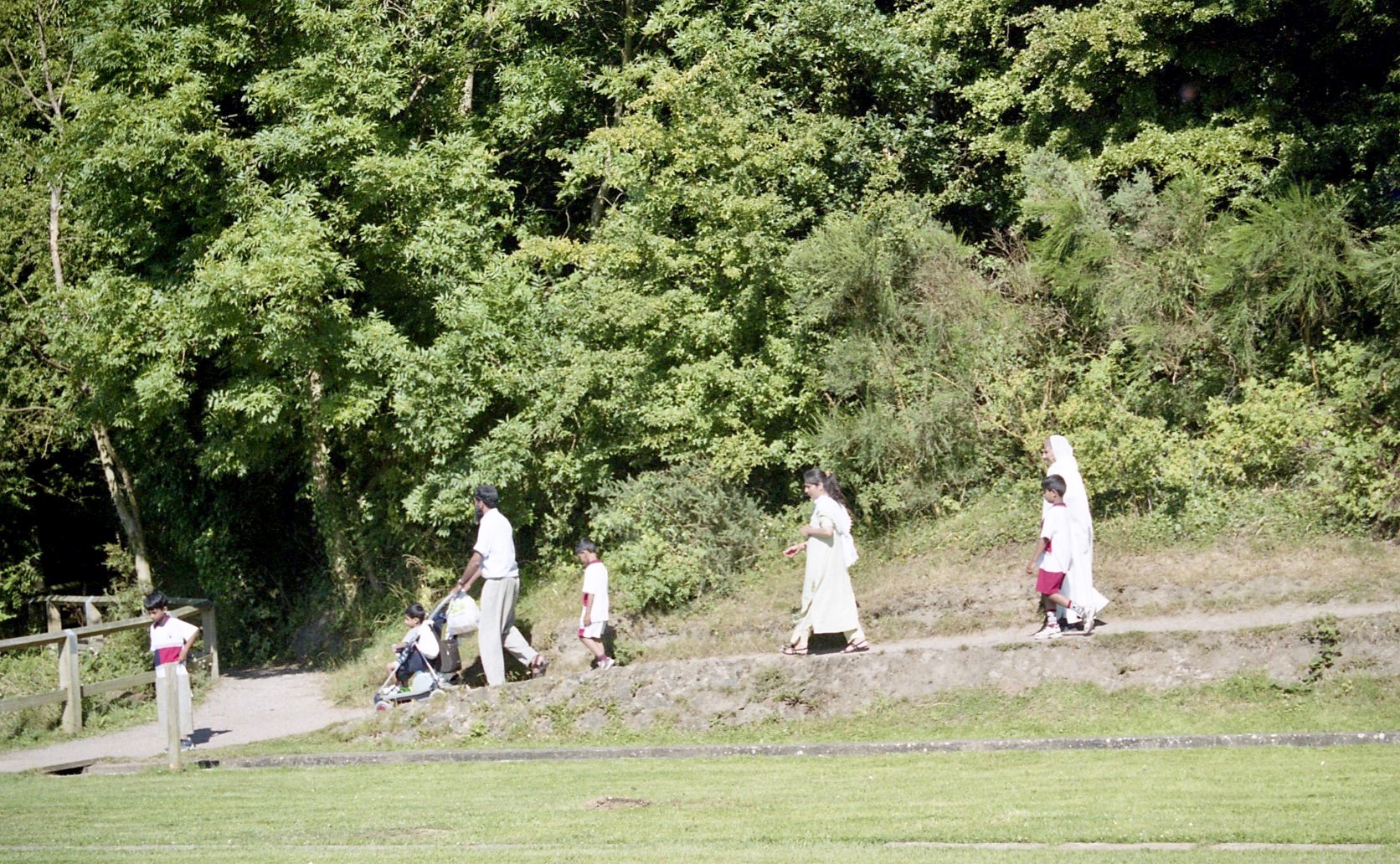


This morning more drops of precipitation bestowed magnifying lenses upon the burgeoning bottle brush plants and poppies; and upon the fully grown pink geraniums.
After lunch we drove to Milford Sand & Ballast to buy three more bags of cement for Aaron’s work on Sunday.
When, yesterday, I embarked on yet another series of photographs with which to prod my memory and illustrate my posts, I thought I would have a recap.
First, we have Elizabeth’s ‘Through the ages’ portraits of me.

Number 60 is dated 5th October 1991. It is easy to remember because it represents my contribution to the gathering of the clans at Tanfield Road, South Croydon, on the occasion of Michael and Heidi’s wedding. I have an arm round each of Becky and Sam. My eldest son has made an early start on the wine. Louisa, who would say that she always looked forward to Matthew’s visits so that she could climb all over him, is already on his lap.
I am also working my way through my early colour slides. Today I scanned a set of Jackie taken in December 1972, when I spent Christmas with her and the children. Here are three of the portraits:



This was a very painful time, but we did our best.
After this came the identification and scanning of unsorted negatives, including

Sam and Snoopy at Carole and Brian’s wedding meal in 1982;

Louisa, delighted to be on her feet, flashing her new choppers in 1983;

Sam, passing on the benefits of his wisdom;

And Jessica singing to him from a song sheet that same year.
Another set is the Streets of London, begun yesterday. Today’s selection from those scanned today were photographed in April 2004.

Yesterday we saw the point where Maida Avenue joins Warwick Avenue. Here we see Regents canal and its narrow boats running alongside it. There really is a slope in the road. This area is known as Little Venice, and the boats you see are residential. Mooring fees are now pretty prohibitive, but there is a keen community living afloat.

Just around the corner from there, is Warwick Crescent, W2. The view here is from one of the counselling rooms I rented during the ’80s and ’90s.

The elegant, I think Georgian, dwellings of Park Place Villas W2, are overlooked by the red-haired tower block soaring further up Edgware Road. It dominated the skyline of the vicinity.

Another shot from my counselling room window looks down to Harrow Road, W2. The scene features a very large roundabout, in the centre of which is a building that was unoccupied for about forty years. It is now used commercially following the huge canalside development visible in the background. When I first knew Beauchamp Lodge in the early 1970s, this was waste ground occupied by travellers, their families, and their pets. The building on the right won an award, I think around 1960, for the use of concrete in construction. The London taxi cab would have been aiming to go down the road alongside the concrete building, at the bottom of which was a taxi centre.
One evening, when I was leaving my building for home, a car came screeching round the roundabout, stopped, and reversed towards a following vehicle. Both cars came to a halt within inches of each other. I noticed that the car in front was occupied by two young men; the other by a lone young female driver. The driver of the leading vehicle left his car to remonstrate with the young lady. There was nothing for it but to get involved. I ambled across, with as much nonchalance as I could muster, advised the woman to close her window, – I ask you, she had to be advised to do that – and leant against the railings with my hands in my pockets. Just observing, you understand. The remonstrations became more vociferous, probably because the window was closed. The passenger then emerged and menaced me. Keeping my hands out of sight, I politely explained that I was simply a spectator.
It was only after the aggressors had sped off out of sight that I realised a taxi and a lorry had stopped on the roundabout. The drivers were both ready to get involved had it turned more nasty. Apparently the reversing driver had overtaken the young woman who had stuck one finger up to him out of her window. That, of course, is far more insulting than two.

This evening’s final offering from the Streets of London is Preston Gardens, NW10, Neasden. This corner building changed its occupancy, its facade, and its usage on a regular basis during the ten years or so I passed it when visiting Norman. Each new wave of immigrants has imposed its own stamp. If I remember rightly, the Chinese Takeaway in Church Road is now a Somali taxi cab service.
Other series include various sets of prints for which I have not yet traced the negatives. I had planned to feature just one picture from each series. But I got rather carried away, and having spent most of the day on this, I don’t have the energy for going on to the reflective scanning, so I will close in the normal manner.
We dined on chicken Kiev roasted in the oven with peppers, onions, and mushrooms; green beans, leaks, and boiled potatoes. I finished the Madiran, and Jackie drank Hoegaarden.



























